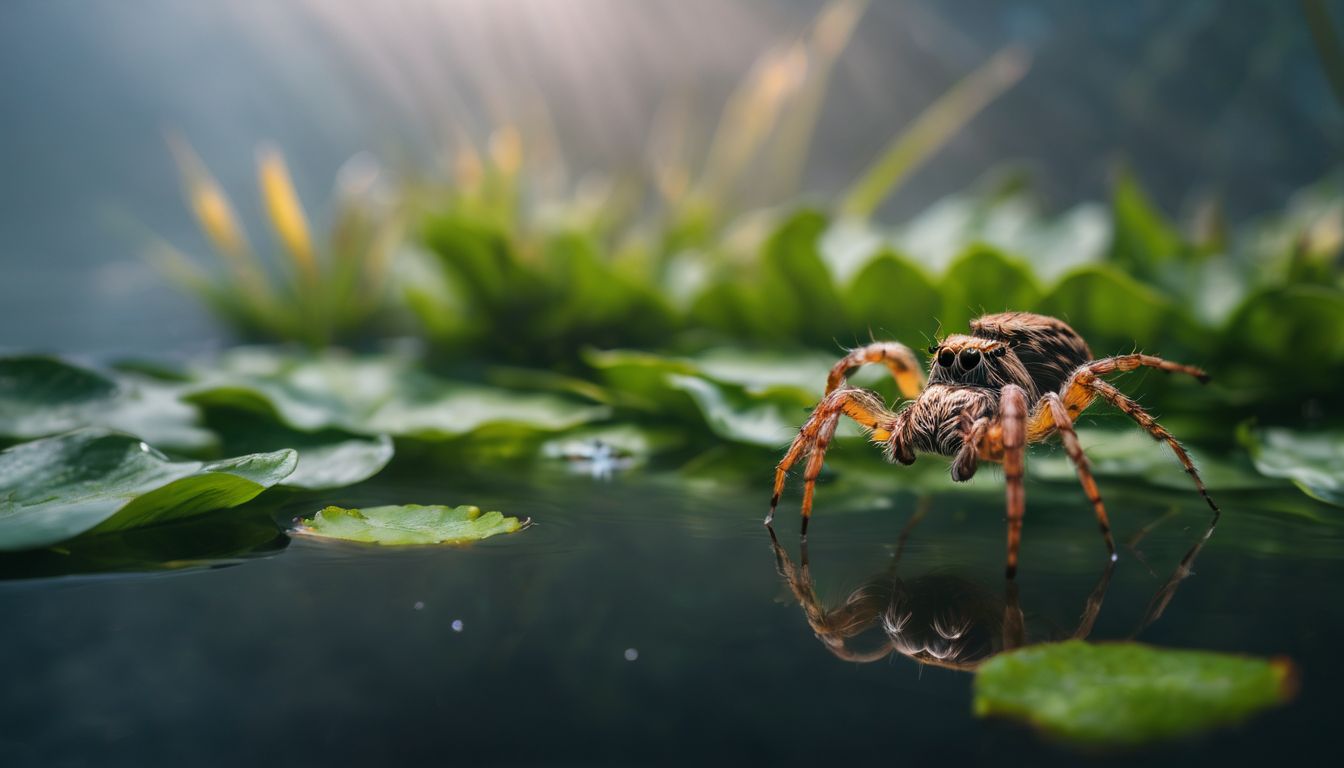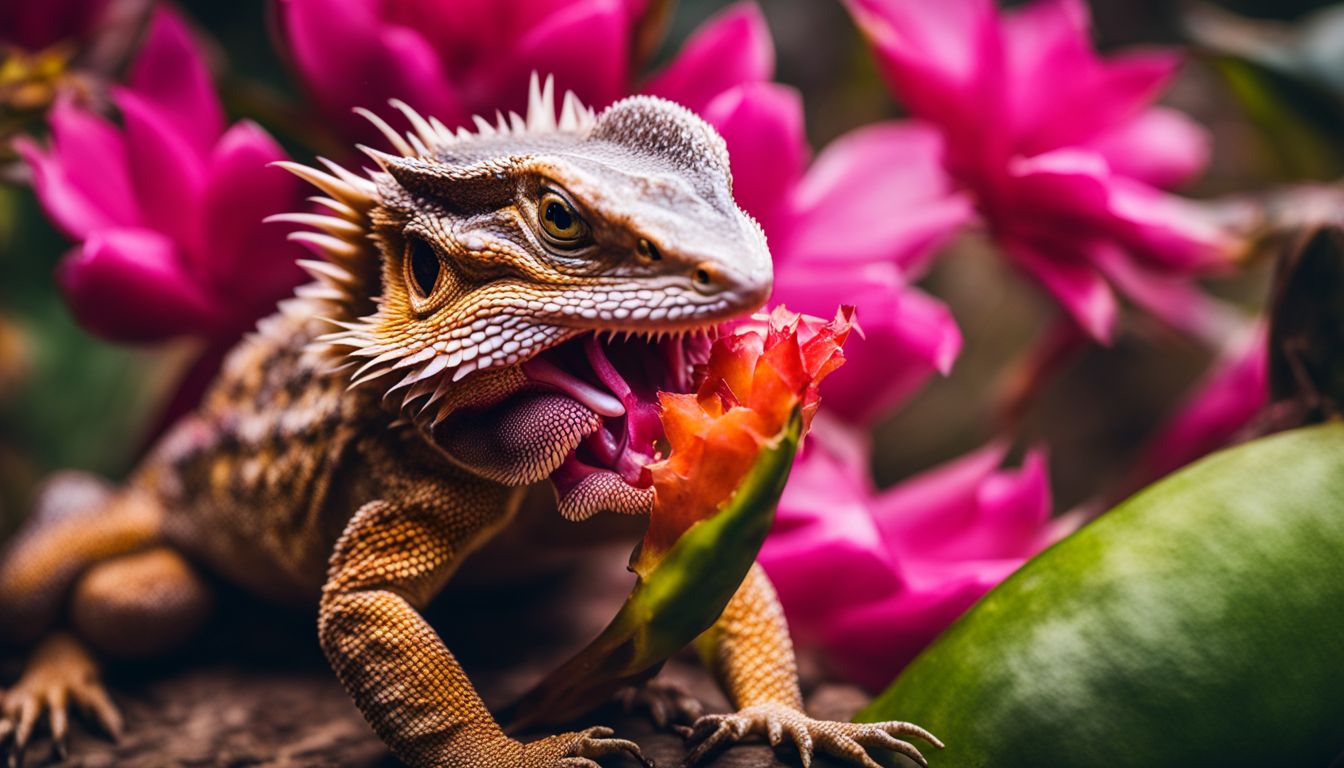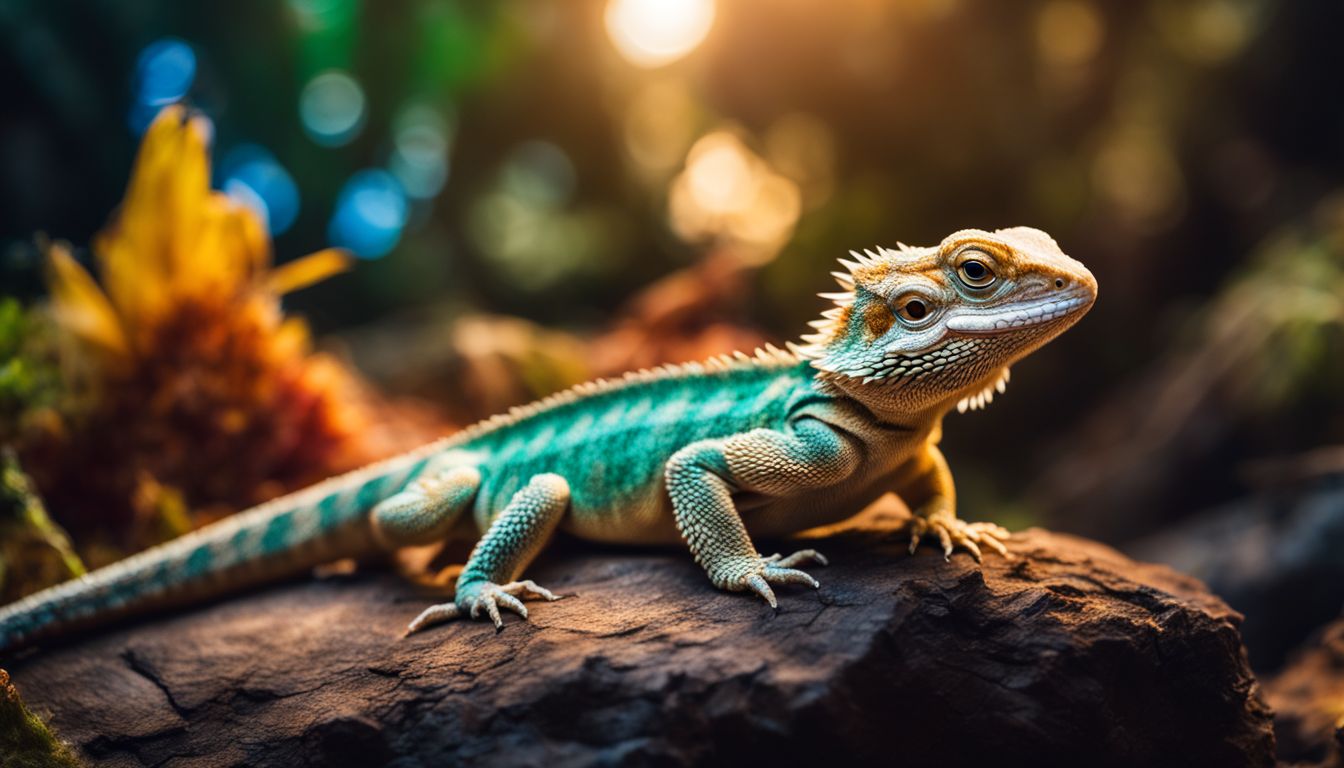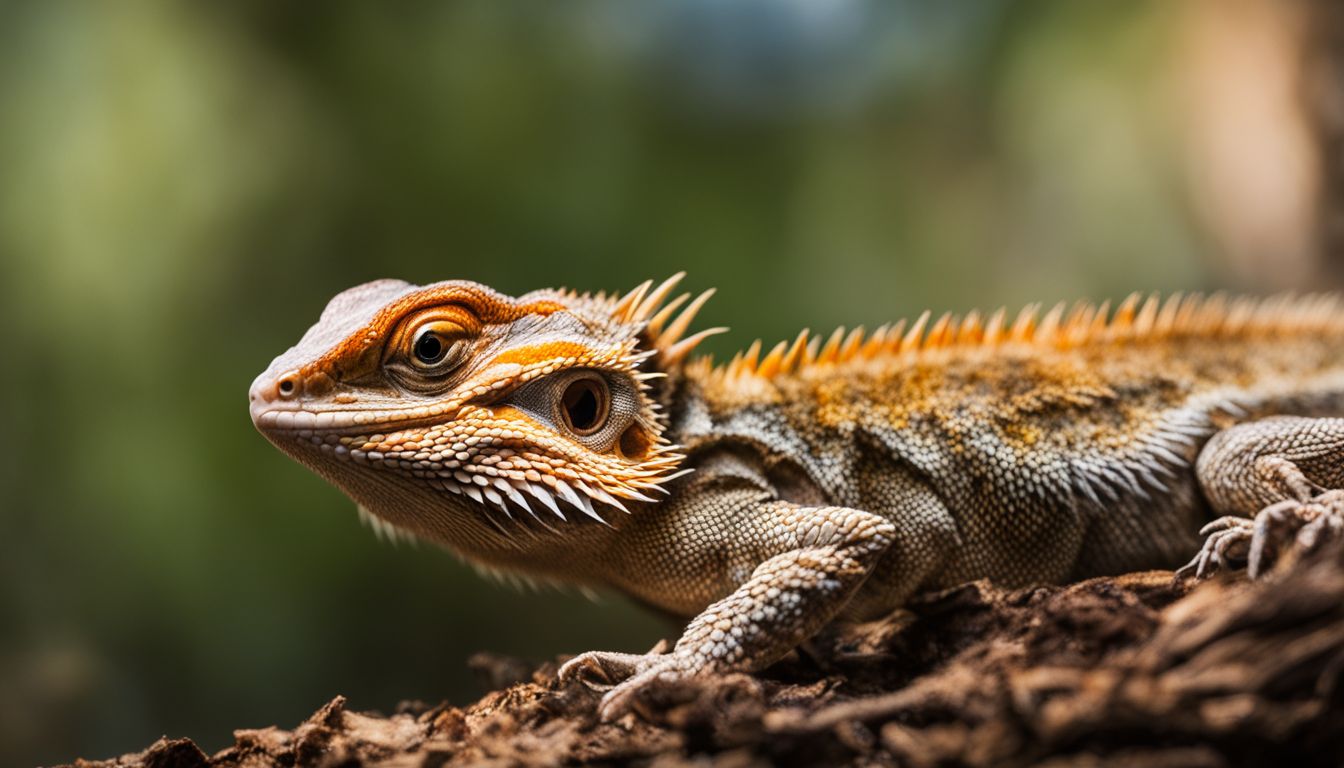Have you ever wondered if those eight-legged creatures you see scurrying across dry land can take on the challenge of swimming? Believe it or not, some spiders are quite adept at navigating aquatic environments.
This blog post will dive into the world of spiders that have adapted to swim, hunt, and even breathe underwater. Get ready to discover how these fascinating arachnids thrive in places we least expect!
Key Takeaways
- Some spiders, like the Diving Bell Spider and Fishing Spider, have adapted to swim and even breathe underwater.
- Spiders use hydrophobic hairs and book lungs to walk on water and breathe underwater, showcasing their unique aquatic abilities.
- Interactions between spiders and other species reveal their crucial role in ecosystems, from being prey for birds to debunking myths about domestic encounters.
The Fascinating World of Swimming Spiders
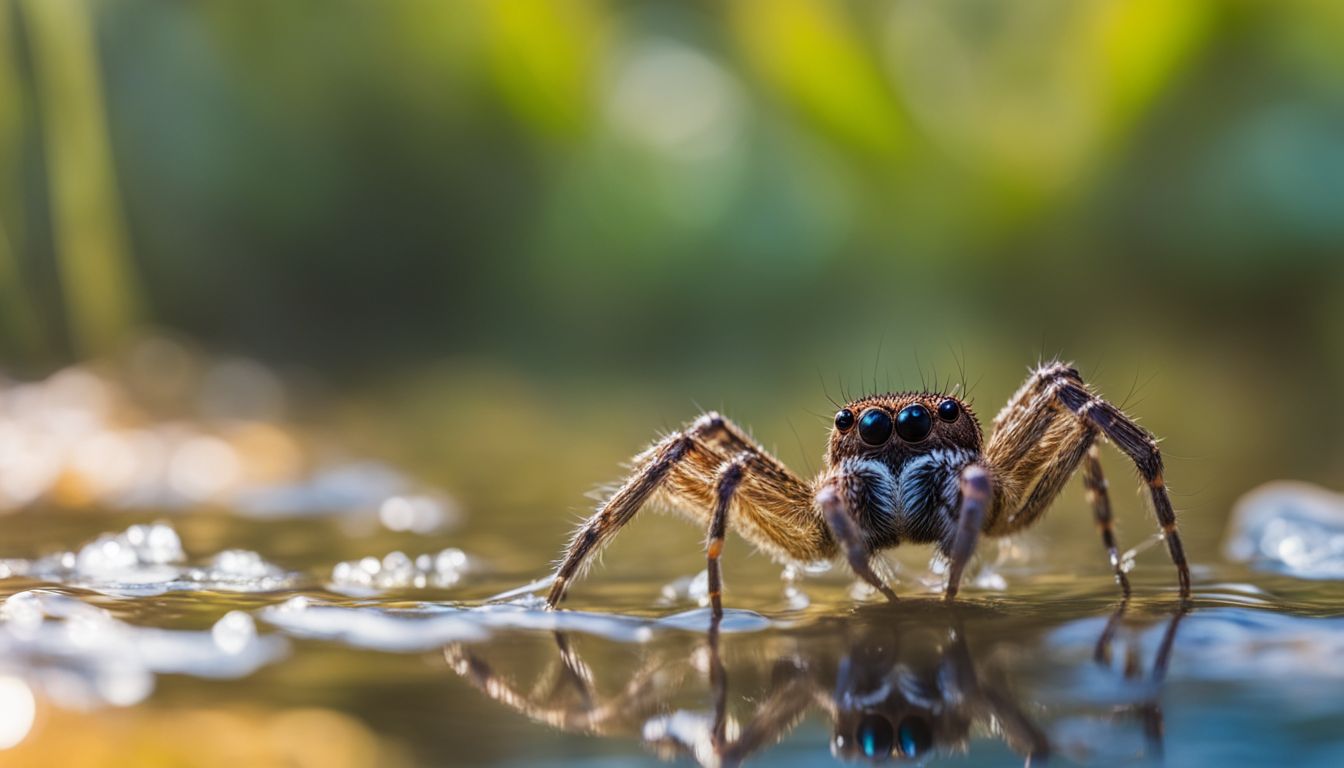 Fishing Spider walking on water.” title=”A close-up photo of a Fishing Spider walking on water.” class=”awimage” />
Fishing Spider walking on water.” title=”A close-up photo of a Fishing Spider walking on water.” class=”awimage” />
Meet the incredible aquatic arachnids, including the Diving Bell Spider which spends its entire life underwater, the Fishing Spider that can walk on water, and the Wolf Spider that occasionally takes a dip in freshwater habitats.
Let’s dive into their unique abilities and behavior in aquatic environments.
Diving Bell Spider: Life Underwater
The diving bell spider is a true underwater marvel. It makes an air-filled home called a diving bell with its silk. This web bubble allows the spider to breathe while it does everything under the water: rest, hunt, mate, and lay eggs.
The spider’s special bubble even takes in oxygen from the water around it, much like gills do for fish.
This amazing water spider rarely leaves its aquatic world. To keep breathing, it only goes up to refresh the air in its diving bell. Even with book lungs meant for air on land, this creature can live underwater for up to two years.
Fishing Spider: Master of the Water’s Surface
Fishing spiders are real champs at walking on water. They use their long legs to skate over ponds and lakes. This cool skill helps them catch small fish and bugs for food. These spiders have special hairs that keep them from sinking, so they can zip around looking for something tasty.
Some fishing spiders don’t just walk on top; they can also dive down to get prey. They hold their breath and swim under the water like pros! They even make little webs near the water’s edge to trap more things to eat.
These amazing creatures show us how some spiders turned into masters of both land and water hunting!
Wolf Spider: Occasional Swimmer
Moving from the skilled surface skaters like fishing spiders to the occasional swimmers, wolf spiders show us another side of arachnid versatility. These eight-legged creatures aren’t known for living in water, but they can handle it well when they need to.
Wolf spiders use their strong legs and special hairs to float and paddle around. Near woods and streams, these hunters may surprise you by swimming across small bodies of water as they chase after food or escape danger.
Wolf spider moms carry their egg sacs everywhere with them, even into the water. So if you see one swimming, she might be taking extra care not to let her future spiderlings get wet! This ability to move through different terrains makes wolf spiders amazing survivors in nature’s wild world.
How Spiders Manage to Swim
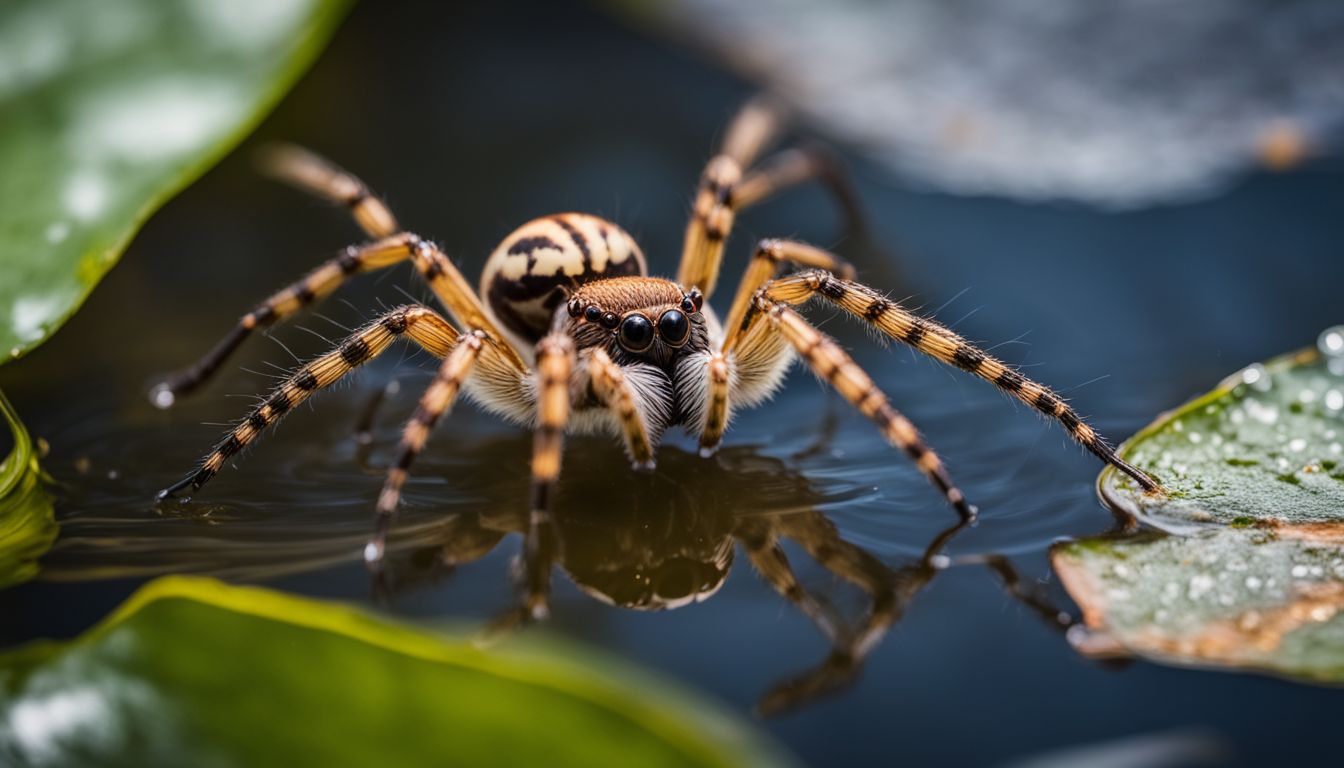
Spiders have hydrophobic hairs that allow them to walk on water, and book lungs that enable them to breathe underwater. They use a variety of swimming techniques to navigate through aquatic environments with ease.
Hydrophobic Hairs: Walking on Water
Spiders can walk on water because they have a special coating that repels water. This is called their hydrophobic nature. The tiny hairs on a spider’s body are also designed in such a way that they help the spider stay atop the water surface without getting wet.
These features enable certain species of spiders to move effortlessly across bodies of water, giving them the ability to hunt and navigate in aquatic environments.
The hydrophobic nature of spiders allows them to stay dry even when they’re on the water’s surface. The presence of these microscopic hairs on their bodies further aids in keeping them buoyant and mobile on water, allowing certain spiders to utilize different habitats for hunting and survival.
Book Lungs: Breathing Underwater
After learning about how spiders use hydrophobic hairs to walk on water, it’s fascinating to delve into another aspect of their aquatic prowess: breathing underwater using book lungs.
These unique respiratory organs found in arachnids like spiders and scorpions act as a passive breathing system, allowing air to flow in without the aid of the body. This remarkable structure enables certain spider species to breathe underwater, contributing to their ability to swim and even live fully submerged in freshwater or seawater.
The presence and function of book lungs shed light on the astonishing adaptability of spiders, showcasing their diverse capabilities beyond what is commonly known.
Swimming Techniques of Aquatic Spiders
After learning about how aquatic spiders breathe underwater through book lungs, it’s fascinating to explore their swimming techniques. Here are the unique ways these arachnids navigate through water:
- Hydrophobic Hairs: Aquatic spiders use tiny, water-repellent hairs on their legs and bodies to stay afloat and move across the surface tension of water.
- Air Bubble Trapping: Some species like the diving bell spider create air bubbles around them using silk, which they use for breathing while submerged.
- Paddle-Like Legs: Certain spiders have adapted leg shapes that allow them to efficiently paddle through water, aiding in both hunting and evading predators.
- Air Storage: Aquatic spiders store air between their body and the water’s surface, creating a makeshift oxygen reservoir for extended underwater stays.
- Surface Tension Mastery: Spiders exploit the surface tension of water to walk on it or even lay eggs beneath its surface, showcasing remarkable control over this property.
- Silk Use: From constructing underwater retreats to creating dragline threads for navigation, aquatic spiders utilize silk in ingenious ways for swimming and survival.
Unraveling Myths: Can Spiders Drown?
Explore the truth about spiders and water, and discover whether these fascinating creatures can actually drown. Read on to find out more about the aquatic abilities of arachnids!
The Reality of Spiders and Water
Spiders can be found near water, but they don’t come up through drains. They are attracted to water in sinks and bathtubs because they may find insects there which they eat. Spiders do not drown easily due to their ability to trap air bubbles around them, allowing them to breathe underwater for a limited time.
However, if spiders stay submerged for too long, they can eventually drown.
Now let’s explore the interactions between spiders and other species and discover how different creatures interact with these eight-legged creatures.
Interactions Between Spiders and Other Species
Spiders play a crucial role in the ecosystem, as they are both predator and prey. Explore the fascinating connections between spiders and other species, including their interactions with birds, insects, and even domestic environments.
Do Birds Eat Spiders? The Connection Between Arachnids and Avian Diets
Many birds, from tiny wrens to larger crows, eat spiders as part of their diet. Goliath bird-eating tarantulas are known for consuming not only birds but also small animals like frogs and lizards.
A study in the Marianas found that birds directly control spider populations through predation. The Goliath birdeater spider’s diet includes catching and eating small animals, including birds and other vertebrates.
It’s interesting that avian predators have influenced the behavior of Myrmarachne spiders by initiating ant-mimicking adaptations, providing a unique connection between arachnids and avian diets.
The Curious Case of Spiders in Domestic Waters
Spiders in domestic waters raise questions like ‘Can spiders swim up your toilet?’ and ‘How do they survive in household water sources?’ Explore the interesting behaviors of domestic spiders and their interactions with human environments.
Can Spiders Swim Up Your Toilet?
Spiders cannot swim up your toilet. They do not survive in the water and cannot emerge from the drain hole. If a spider gets flushed down a toilet, it drowns in the water because it does not have the ability to swim or breathe underwater.
There is a common myth that spiders can navigate through plumbing systems and end up in toilets, but this is not true. Spiders are more likely to enter a bathroom from under the door rather than coming up through the toilet.
In reality, spiders do not emerge from the drain hole of toilets as they cannot get past the U-bend and cannot survive in the water. Therefore, if you ever encounter a spider in your bathroom, it’s more likely that it found its way into your home through other means rather than swimming up through your toilet.
Conclusion
In conclusion, aquatic spiders exhibit fascinating abilities that challenge traditional beliefs about their behavior. Their unique adaptations for swimming and hunting in water reveal the diverse range of behaviors within the arachnid world.
Understanding how spiders navigate aquatic environments broadens our knowledge of their survival strategies and ecological roles. Exploring the aquatic abilities of spiders sheds light on the complexity and diversity of these often misunderstood creatures in various natural habitats.
Discover more about the intriguing relationships in nature by reading our article on whether birds eat spiders.
FAQs
1. Can all spiders swim like fish do?
Not all spiders can swim. The diving bell spider is one kind that lives underwater, but most others do not swim and could drown if they fall into water.
2. What’s special about the diving bell spider?
The diving bell spider can stay underwater because it makes a bubble of air to breathe with. It uses this air bubble as its home and catches small creatures in water plants.
3. Are there any big spiders that live near water?
Yes! The great raft spider and dolomedes triton are big spiders that can walk on top of water to look for food like insects or tadpoles.
4. How do some water spiders catch their food?
Some, like the raft spider, move fast across the top of the water to chase down bugs like mosquitoes and mayflies, using their long legs almost like paddles.
5. Do all spiders living in water build diving bells?
No, only a few types make bubbles called “diving bells” where they can hide and have babies safely away from animals that might eat them.
6. Can swimming hurt a spider?
Yes, while some are good at dealing with being near or on top of water; many land-loving ones would be in trouble if they fell into deep water since they don’t usually go there on purpose.

